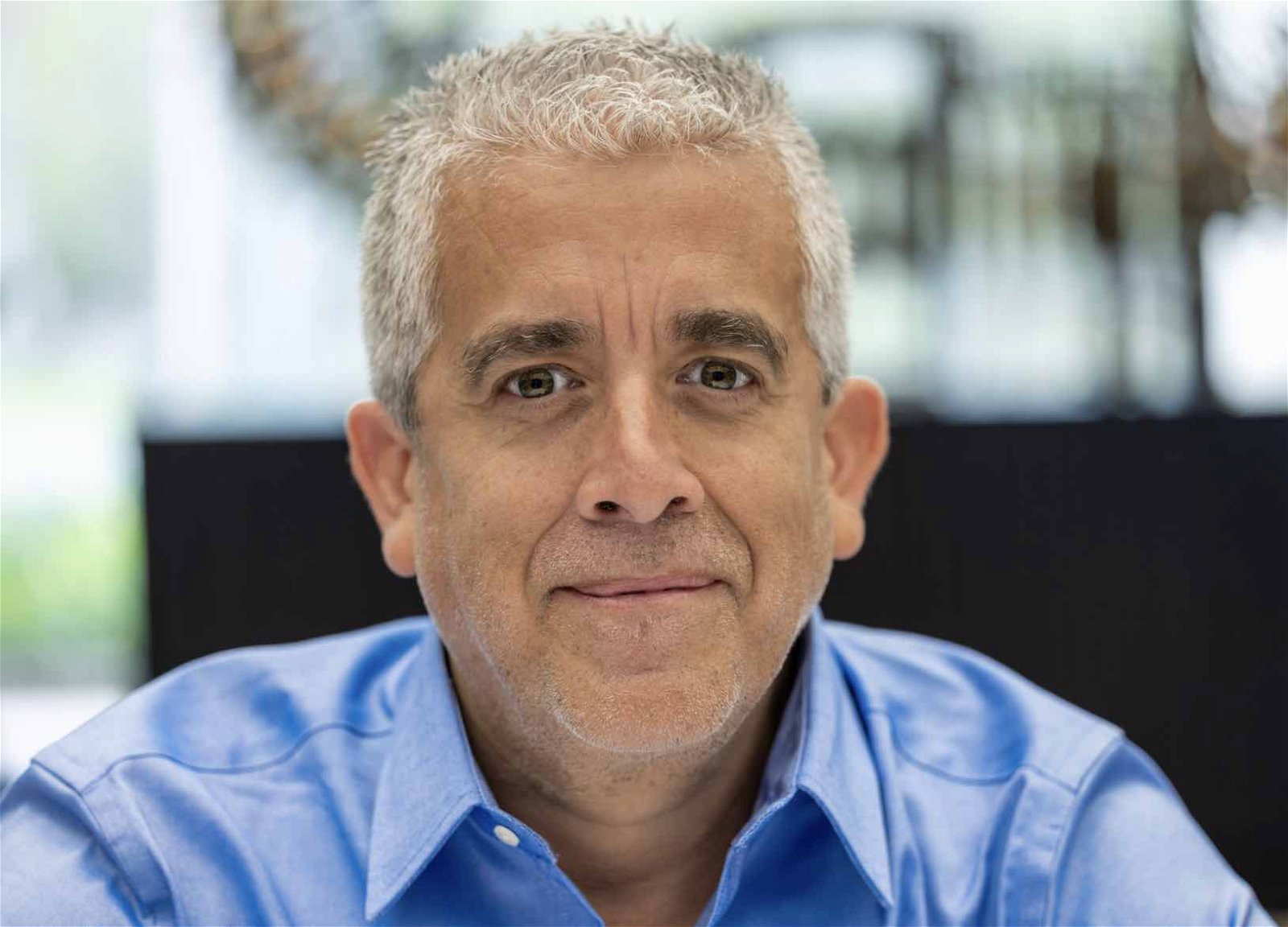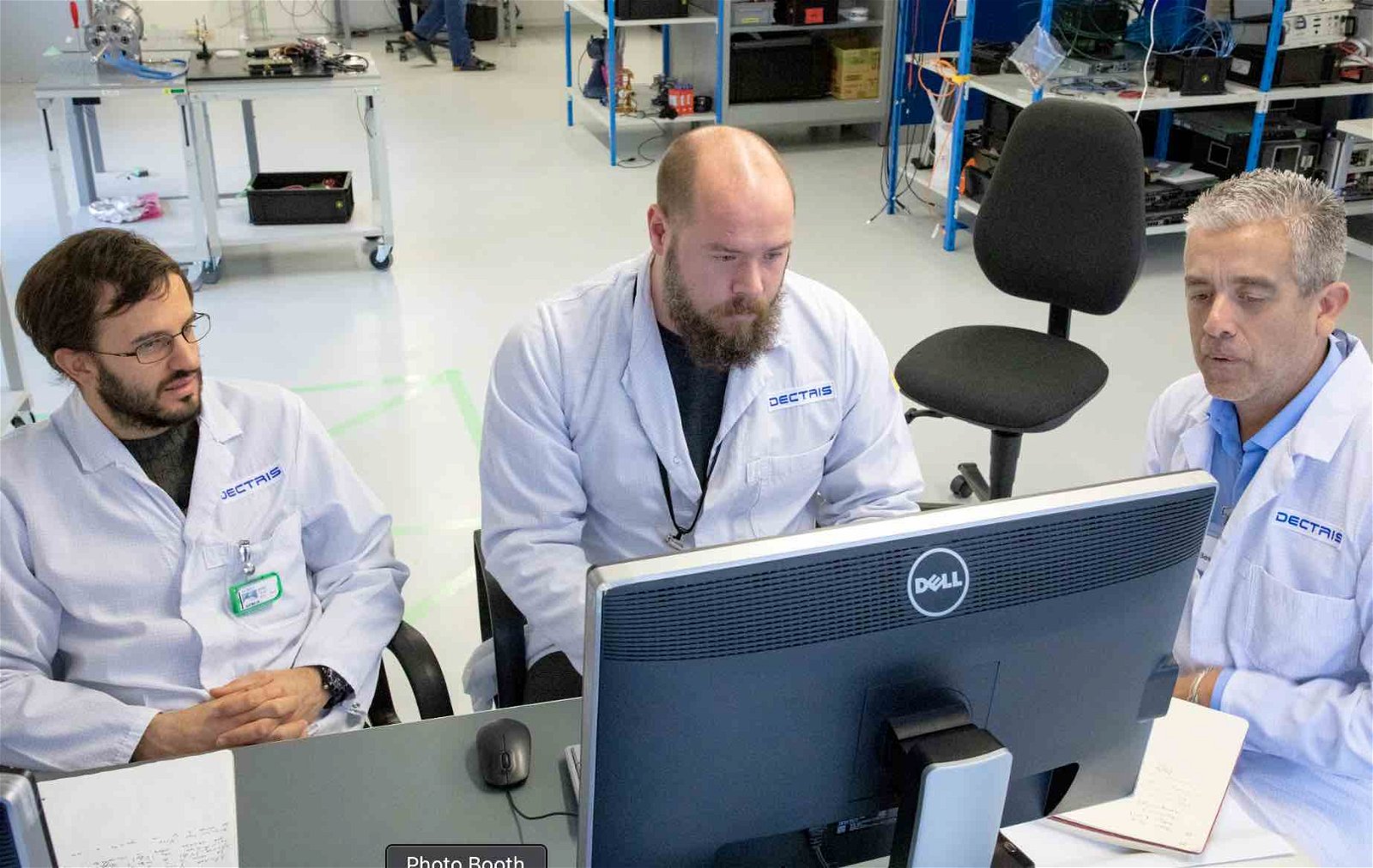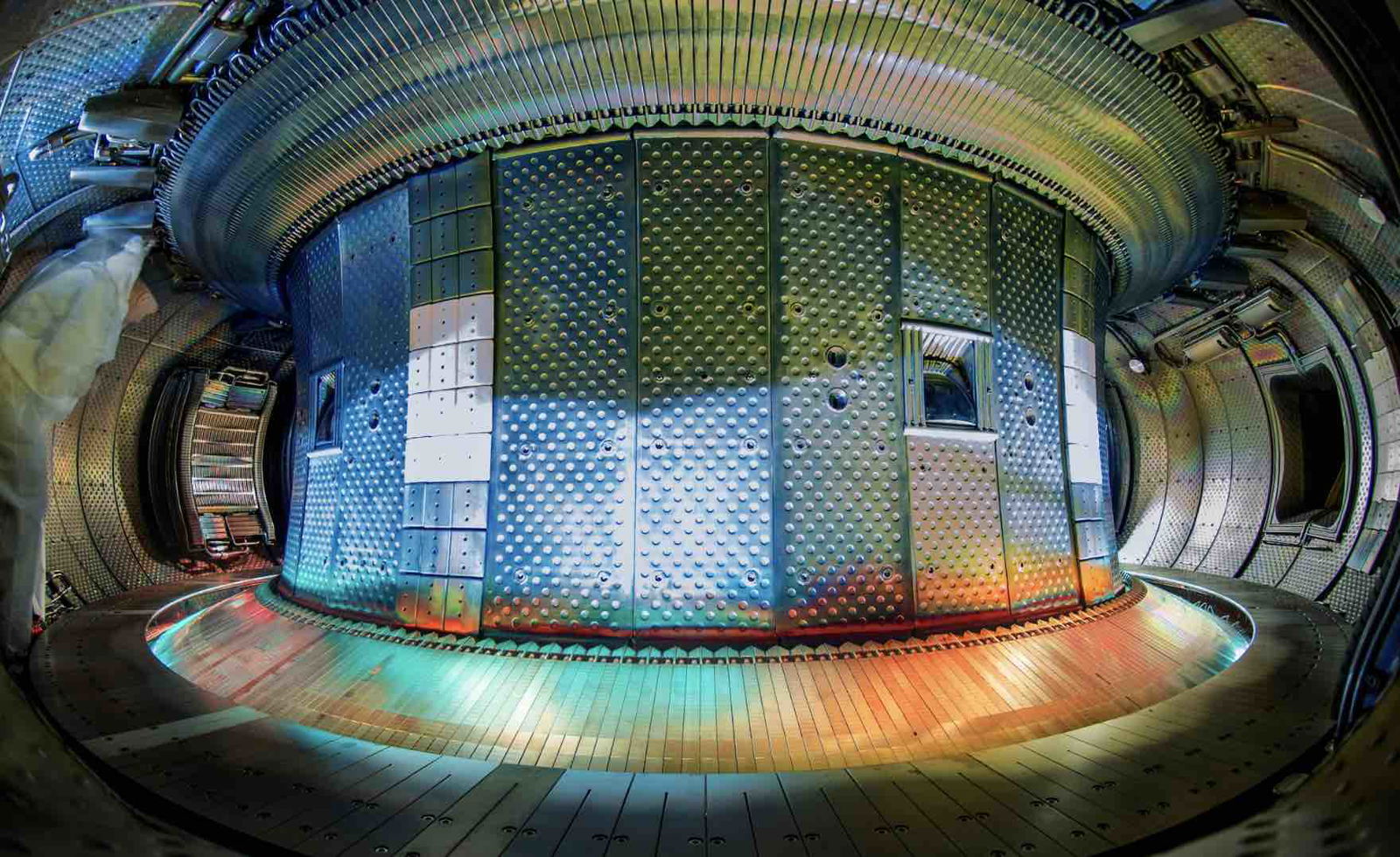A new record in fusion has been achieved using a device internally clad in tungsten, a development that could set the pace for helping make fusion energy viable at the commercial scale.
Princeton Plasma Physics Laboratory (PPPL), a U.S. Department of Energy (DOE) facility, reports that the device was able to sustain hot fusion plasma nearing temperatures of 50 million degrees Celsius for a record-breaking six minutes. Relying on 1.15 gigajoules of power, the latest achievement saw a 15% increase in energy, as well as twice the density of previous experiments.
The new milestone was set using the tungsten (W) Environment in Steady-state Tokamak, or WEST, operated at PPPL by the French Alternative Energies and Atomic Energy Commission (CEA) and a part of the International Atomic Energy Agency’s group for the Coordination on International Challenges on Long duration OPeration (CICLOP).
Scientists hope to harness viable sources of fusion energy in the years ahead as a long-term, clean, safe, and cost-effective energy source. In addition to its affordability, fusion energy produces no greenhouse gases and far less persistent radioactive waste.
WEST is a tokamak, a large device used by fusion researchers to confine extremely hot plasma, the fourth state of matter, within a toroid (donut-shaped) containment area with strong magnetic fields.
Recent months have seen several notable advancements toward realizing fusion energy. These include experiments carried out last year at Lawrence Livermore National Laboratory (LLNL) that achieved ignition and yielded more energy than they consumed and additional fusion achievements by researchers at the Joint European Torus (JET) reported in February.


Xavier Litaudon, a CEA scientist and Chair of CICLOP, says the world requires a new clean and reliable energy source, which “should be continuous and permanent,” and called the new record set at PPPL with WEST “beautiful results.”
“We have reached a stationary regime despite being in a challenging environment due to this tungsten wall,” Litaudon said in a statement.
The milestone was achieved with the aid of a new approach that helped the PPPL researchers improve their measurements of the properties of plasma radiation by employing a unique X-ray detector within WEST.
Luis Delgado-Aparicio, the lead scientist for the physics research and the X-ray detector project who leads the advanced projects division at PPPL said the X-ray group is developing additional tools for tokamaks, as well as another variety of fusion devices known as stellarators, which will help to increase the precision of measurements hot fusion plasmas and to enhance the overall capabilities of fusion devices.


In the case of WEST, the new measurement capabilities allow researchers to leverage a hybrid photon counting technology to monitor the dynamics and behavior of plasma within the tokamak. Currently, efforts continue to find the best means of extracting heat from plasma during fusion reactions, which is no small task since it essentially requires emulating conditions that naturally occur on the Sun.
In the past, an earlier version of the device known as Tore Supra was successfully able to generate a longer reaction. The main difference with those experiments was that the interior of the tokamak had been composed of tiles made from graphite since carbon helps to enable a safe environment for the “shots,” as researchers call them.
However, while graphite has its benefits, it also potentially introduces problems. Namely, the presence of carbon can cause fuel to be retained in the tokamak’s wall, which would not be suitable with large-scale reactors that will require tritium to be recovered from the reactor chamber to be reunited with the hot plasma.
Tungsten, by contrast, is known to retain far less fuel than graphite. Additionally, researchers note that if small particles of the material make their way into the plasma during fusion, the radiation tungsten produces will help to cool the plasma. Despite these advantages, Tungsten also presents a few issues, according to Delgado-Aparicio, who likened its use in contrast with graphite to the difference between taming a tiger in the wild versus a small kitten within your home.
The specialized equipment used in the PPPL team’s novel approach to measuring the shot was developed by the Swiss company DECTRIS, which develops photon-counting X-ray detectors that are currently used worldwide. Delgado-Aparicio and his team modified the device, known as a multi-energy soft X-ray camera (ME-SXR), specifically for the PPPL research team’s experiments.
“The diagnostic basically measures the X-ray radiation produced by the plasma,” said Tullio Barbui, a Staff Research Physicist in the Advanced Projects department and one of Delgado-Aparicio’s team members. “Through the measure of this radiation, we can infer very important properties of the plasma, such as the electron temperature in the real core of the plasma, where it is the hottest.”
With the help of a new calibration technique developed by the PPPL team, the energy on the DECTRIS system was able to be set independently for each pixel, which under normal function are all set to the same level of energy. Given that WEST can be notoriously difficult to calibrate, a process further complicated by readings that may be inaccurate due to the presence of radio frequencies used to heat the plasma, the new approach is advantageous since the team’s novel diagnostic process is essentially immune to such interference.


During the PPPL team’s six-minute shot, Barbui said the team had no trouble measuring the central electron temperatures, which remained at a very stable 4 kilovolts throughout the experiment.
As electrons change direction and lose speed, they produce what researchers identify as Bremsstrahlung radiation. One challenge for the PPPL team had been finding the right frequencies of light from this radiation, which can also be emitted by the plasma, as well as the tungsten walls within WEST.
“The photon energy band between 11 and 18 kilo-electronvolts (keV) offered us a nice window of opportunity from the core emission never explored before,” Delgado-Aparicio said in a statement, “and thus influenced our decision to carefully sample this range.” Under normal circumstances, only two measurements would be made while using this method, but in this instance, the PPPL team employed a series of measurements.
The detector’s unique calibration allowed Delgado-Aparicio and the team to obtain readings for each energy level between 11 and 18 keV, as well as for each line of sight from their camera, sampling throughout the cross-section and collecting around 10 measurements every second. For the process to work, the researchers were required to use the intensity from the lowest 11 keV energy as their reference point, with additional measurements from the seven other intensity levels compared to this original baseline.
This process resulted in Delgado-Aparicio and his team’s seven simultaneous temperature readings—one for each line of sight—granting them unprecedented accuracy with their measurements.
“This innovative capability is now ready to be exported to many machines in the U.S. and around the world,” Delgado-Aparicio said. “From the eight different intensity measurements, we got the best fit, which was between 4 and 4.5 kilovolts for the core plasma.”
“This represents nearly 50 million degrees and for up to six minutes,” he added.
Each of these diagnostic readings helped the team calculate the electron temperatures within the plasma but also helped them gauge the plasma’s charge and the density of its impurities, mainly having escaped from the surrounding tungsten walls.
In short, the PPPL system represents a first-of-a-kind capability that grants researchers unprecedented energy discrimination capable of providing detailed information on temperature and impurities within the plasma. Although other methods of obtaining this data exist, both through separate diagnostics and modeling, the new method is a more direct way of obtaining the information and will be able to gather more of it in future experiments.
“This detector has the unique capability in that it can be configured to measure the same plasma with as many energies as you want,” Barbui said in a statement. “Now, we have selected eight energies, but we could have selected 10 or 15.”
Litaudon said that the challenges of using a tungsten-walled facility will certainly benefit from the use of the new camera system, which he said would effectively open “a new route in terms of analysis,” noting that the PPPL team will now be able to measure tungsten within the plasma, allowing researchers to better understand how it makes its way from the wall of the tokamak into the core of the plasma, which he and his colleagues hope will help to minimize impurities in the plasma and enable the ideal conditions for stable production of fusion energy.
Remi Dumont, scientific coordinator for the experiment and head of the Experimentation and Plasma Development Group of the CEA’s Institute for Magnetic Fusion Research, called the team’s results “spectacular.”
“With this combination of diagnostics, we will be able to perform very accurate measurements in the plasma and control it in real-time,” Dumont said.
Micah Hanks is the Editor-in-Chief and Co-Founder of The Debrief. He can be reached by email at micah@thedebrief.org. Follow his work at micahhanks.com and on X: @MicahHanks.

